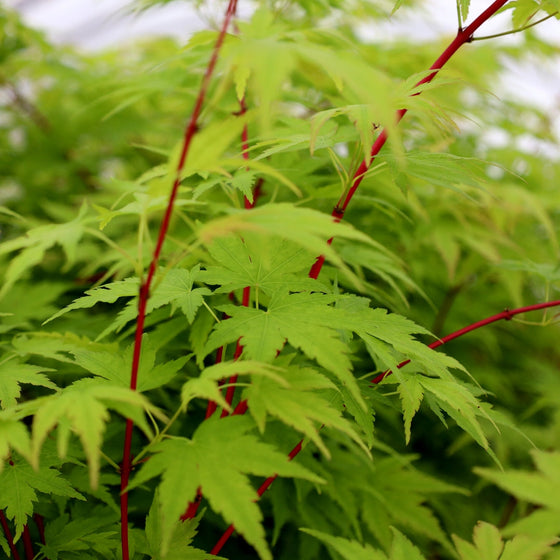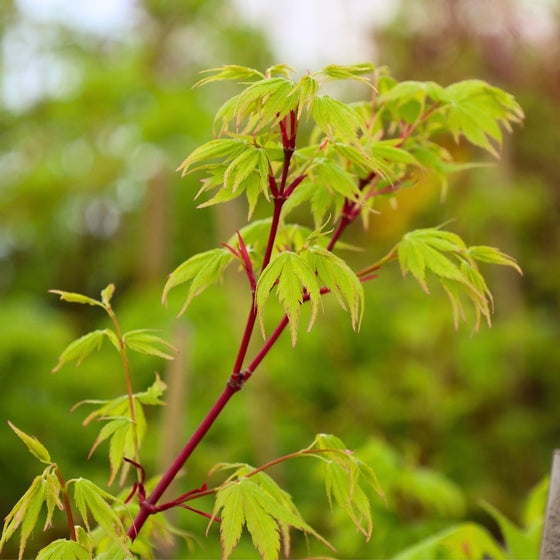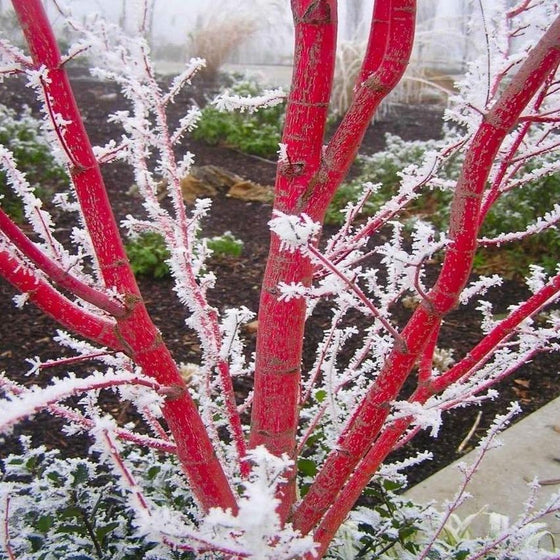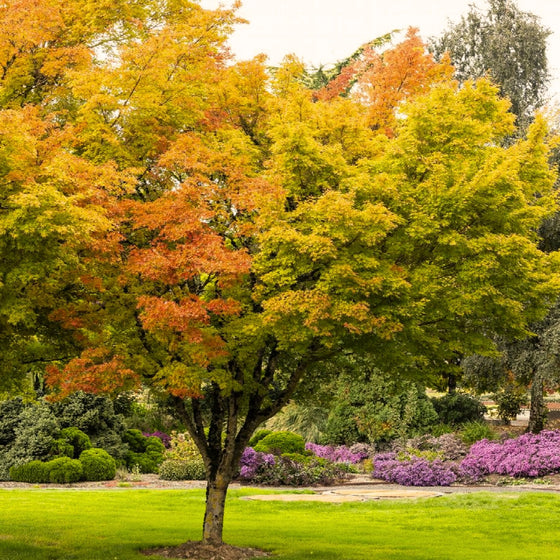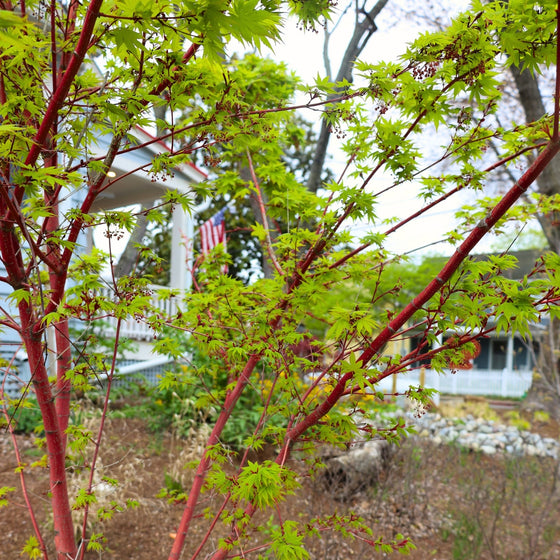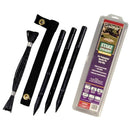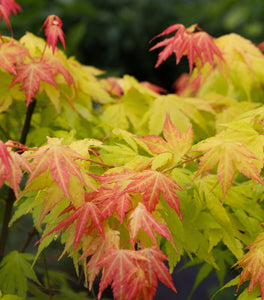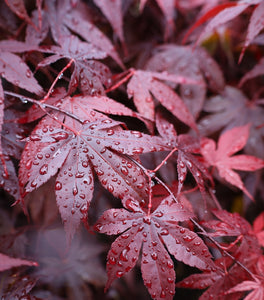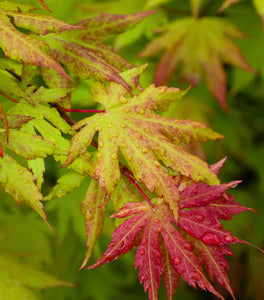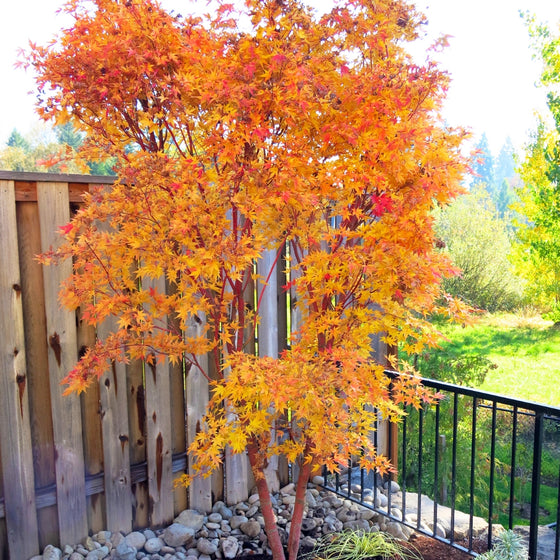
Images Depict Mature Plants
Coral Bark Japanese Maple Trees for Sale Online
The Coral Bark Japanese Maple (Acer palmatum 'Sango Kaku') is a stunning ornamental tree known for its vibrant coral-red bark that provides striking color throughout the year, especially in winter. During the growing season, this deciduous tree boasts delicate, deeply lobed leaves that emerge in a soft yellow-green color in spring, transitioning to a rich green through summer. Come fall, the foliage transforms into shades of bright yellow and orange, creating a spectacular display that enhances any landscape. The contrast between the vibrant leaves and the unique coral-colored bark makes Coral Bark Japanese Maple a true showstopper in any garden, bringing visual interest across all four seasons.
Ideal for USDA Zones 5-8, Coral Bark Japanese Maple grows to a mature height of 15-25 feet, with a similar spread, making it a perfect choice for a small to medium-sized focal tree in the landscape. It thrives in partial shade to full sun, although partial shade is recommended in hotter climates to protect the delicate leaves from scorching. The Coral Bark Japanese Maple prefers well-drained, slightly acidic soil enriched with organic matter to support healthy growth. Its naturally graceful, upright branching habit and relatively compact size make it suitable for use as a specimen tree, in mixed borders, or even planted in containers for patios or entryways.
In addition to its beauty, the Coral Bark Japanese Maple is a low-maintenance tree that requires minimal pruning and general care. Regular watering during dry periods and mulching around the base will keep the roots cool and the tree healthy. The striking red bark, which intensifies in color during the colder months, makes this tree a valuable addition to winter gardens, providing color and interest even when most plants are dormant. Whether planted as a standalone focal point, in a Japanese-style garden, or a mixed ornamental bed, Coral Bark Japanese Maple brings elegance, seasonal color, and four-season interest to any landscape.
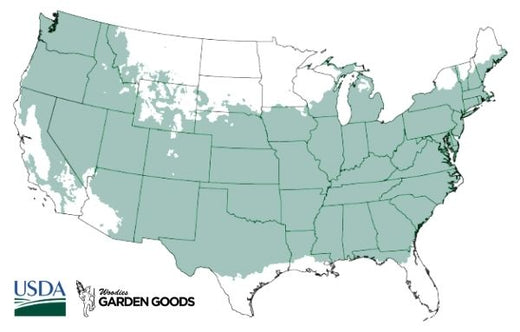
| Hardiness Zone: | 5-8 |
|---|---|
| Mature Height: | 15 to 20 feet |
| Mature Width: | 15 feet |
| Classification: | Medium tree |
| Sunlight: | Part to full sun |
| Habit: | Deciduous, densely branched |
| Flower Color: | Insignificant |
| Foliage: | Pale green with red margins, golden yellow in the fall |
| Soil Condition: | Any well drained soil |
| Water Requirements: | Water well until established |
| Uses: | Extremely attractive when used as a focal point or a specimen planting, very slow growing |
How to Care for Coral Bark Japanese Maple
Before you buy Coral Bark Japanese Maple Trees, make sure to read about the care instructions that are required and recommended to keep this plant healthy and thriving.
How do I plant a Coral Bark Japanese Maple?
To plant a Coral Bark Japanese Maple, begin by selecting a location that receives partial shade to full sun, depending on your climate. In cooler climates, this tree can thrive in full sun, while in hotter regions, it benefits from some afternoon shade to protect its delicate foliage from scorching. The Coral Bark Japanese Maple prefers well-drained, slightly acidic soil enriched with organic matter, such as compost, to promote healthy root development. Dig a hole that is twice as wide as the root ball and of equal depth to provide ample room for the roots to spread. Place the tree in the hole with the top of the root ball level with the surrounding soil, which helps prevent root rot. Backfill the hole with a mix of native soil and compost, then gently firm the soil around the base to eliminate air pockets and provide stability. Once planted, water the Coral Bark Japanese Maple thoroughly to help establish strong root-to-soil contact. Mulching around the base of the tree with a 2-3 inch layer of organic mulch, such as bark or wood chips, helps retain moisture, regulate soil temperature, and suppress weed growth. Be sure to keep the mulch a few inches away from the trunk to avoid potential issues with rot. During the first growing season, keep the soil consistently moist but not waterlogged, as this will help the tree establish a healthy root system. Coral Bark Japanese Maple is a low-maintenance tree once established, requiring minimal pruning and providing beautiful four-season interest with its bright red bark and colorful foliage. Proper planting and early care will ensure your Coral Bark Japanese Maple thrives and becomes a striking focal point in your landscape for years to come.
How do I water Coral Bark Japanese Maple Trees?
Watering Coral Bark Japanese Maple trees properly is crucial to their health and ensures that they maintain their vibrant foliage and unique coral-red bark. During the first growing season, it is important to water deeply and consistently to help the tree establish a strong root system. Typically, you should water once or twice a week, depending on weather conditions, ensuring that the soil remains evenly moist but never waterlogged. Deep watering encourages the roots to grow deeply into the soil, making the tree more resilient to dry conditions in the future. The best way to water is to use a soaker hose or drip irrigation system, which delivers water directly to the root zone and reduces evaporation. Early morning watering is ideal, as it allows the tree to absorb moisture before the heat of the day. Once established, Coral Bark Japanese Maple trees are relatively drought-tolerant, but it is still important to provide supplemental watering during prolonged dry spells or periods of extreme heat to keep them healthy. Check the soil moisture regularly, and water when the top few inches feel dry to the touch. Applying a 2-3 inch layer of organic mulch around the base of the tree can help retain soil moisture, regulate temperature, and reduce the need for frequent watering. Be sure to keep the mulch a few inches away from the trunk to prevent rot and improve air circulation. Proper watering practices, especially in the early stages, are essential for a healthy Coral Bark Japanese Maple, allowing it to thrive and display its stunning red bark and colorful foliage year after year.
How do I fertilize Coral Bark Japanese Maple Trees?
Fertilizing Coral Bark Japanese Maple trees is important for promoting healthy growth, vibrant foliage, and a strong root system. The best time to fertilize is in early spring, just before new growth begins. Use a balanced, slow-release fertilizer, such as a 10-10-10 or a 12-4-8 blend, to provide essential nutrients like nitrogen, phosphorus, and potassium that support the tree's development. Spread the fertilizer evenly around the tree's drip line, which is the area directly beneath the farthest-reaching branches, avoiding direct contact with the trunk to prevent root burn. After applying the fertilizer, water thoroughly to help the nutrients reach the roots and encourage strong growth throughout the growing season. In addition to spring fertilization, Coral Bark Japanese Maple trees benefit from organic compost applied around their base. Adding a layer of compost or well-rotted manure in early spring provides a steady release of nutrients and helps improve the soil structure, enhancing root health. Be careful not to over-fertilize, as excessive nitrogen can lead to overly rapid growth, which might compromise the tree's structure and make it more susceptible to pests and diseases. Generally, fertilizing once a year is sufficient, especially if your soil is already nutrient-rich. Proper fertilization will help your Coral Bark Japanese Maple develop a healthy branching structure, maintain its beautiful red bark, and display vibrant seasonal foliage that enhances your landscape year after year.

How do I Prune Coral Bark Japanese Maple Trees?
Pruning Coral Bark Japanese Maple trees is an essential part of maintaining their natural shape, promoting healthy growth, and enhancing their unique coral-red bark. The best time to prune Coral Bark Japanese Maple is in late winter or early spring, when the tree is still dormant and before new growth begins. Start by using clean, sharp pruning shears to remove any dead, damaged, or diseased branches, as this will improve the overall health of the tree and reduce the risk of pests and diseases. It is also important to remove any crossing or crowded branches to ensure better air circulation and light penetration, which will enhance the tree's overall appearance and encourage a graceful, open structure. Avoid heavy pruning, as this tree has a naturally elegant shape that looks best when left relatively untouched. When pruning Coral Bark Japanese Maple, aim for minimal cuts to maintain the tree's natural form. Trim away any small branches growing toward the interior of the tree, as they can lead to congestion and reduce the tree's visual appeal. Be careful not to prune too much of the tree at once, as this can lead to stress and diminish its beauty. Focus on maintaining the natural layered look of the branches, which contributes to the tree's elegant appearance, especially when paired with its vibrant bark. Light pruning throughout the growing season can also be done to control the size and shape of the tree, but always avoid cutting into older, established branches, as they do not regenerate well. With proper pruning, your Coral Bark Japanese Maple will continue to thrive, showcasing stunning red bark in winter and vibrant foliage throughout the growing seasons, adding year-round interest to your landscape.

